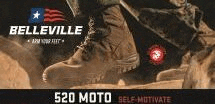HERNDON, Va., Jan. 09, 2023 (GLOBE NEWSWIRE) — ManTech has been awarded a five-year $57 million contract by Naval Surface Warfare Center (NSWC) Crane to develop world-class technology solutions that support advanced expeditionary weapon systems for U.S. Special Operations Command (SOCOM). ManTech won this contract under the Department of Defense Information Analysis Center’s (DoD IAC) multiple-award contract (MAC) vehicle.
NSWC Crane manages the research, development, prototyping, acquisition, test, evaluation and delivery of expeditionary weapon systems for SOCOM Program Manager-Special Operations Force Lethality (PM-SOF Lethality).

David Hathaway, Executive Vice President and General Manager of ManTech’s Defense Sector
“Our mission is to deliver state-of-the-art, next generation technology solutions that enhance the capabilities of all NSWC-managed SOCOM platforms,” said David Hathaway, Executive Vice President and General Manager of ManTech’s Defense Sector. “We are proud to support SOCOM forces with world-leading technology solutions that help ensure real-time mission success in every conceivable environment, challenge and domain.”
Under this task order, ManTech is Bringing Digital to the Mission® with next generation integrated weapon systems and ISR capabilities for manned and unmanned air, ground, surface, subsurface and maritime mobility platforms. SOCOM systems and associated subsystems that will benefit from the program include: weapons ammunition; optics; validation equipment; production equipment; sensor and fire control systems; mounts; rocket, missile and gun systems; integrated pilot and operator displays; crew-served weapon systems and associated mounts; and airframe integration systems. As importantly, the program will deliver quick-reaction and engineering analyses for total life-cycle management of expeditionary weapon systems.
About the DOD IAC Program
The DoD IAC, sponsored by the Defense Technical Information Center, provides technical data management and research support for DoD and federal government users. Established in 1946, the IAC program serves the DoD science & technology (S&T) and acquisition communities to drive innovation and technological developments by enhancing collaboration through integrated scientific and technical information development and dissemination for the DoD and broader S&T community.
Additional information on ManTech can be found at www.mantech.com.






















































































































